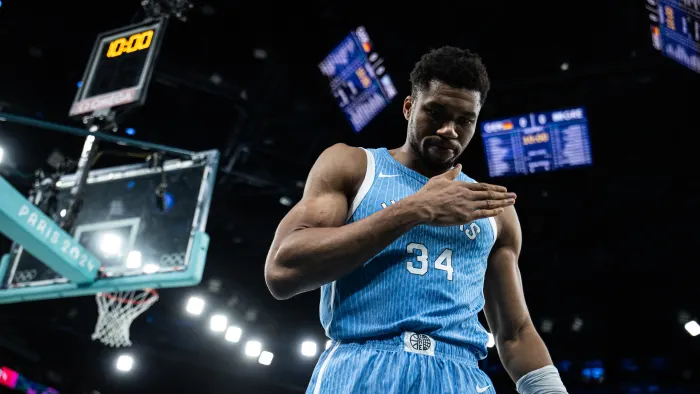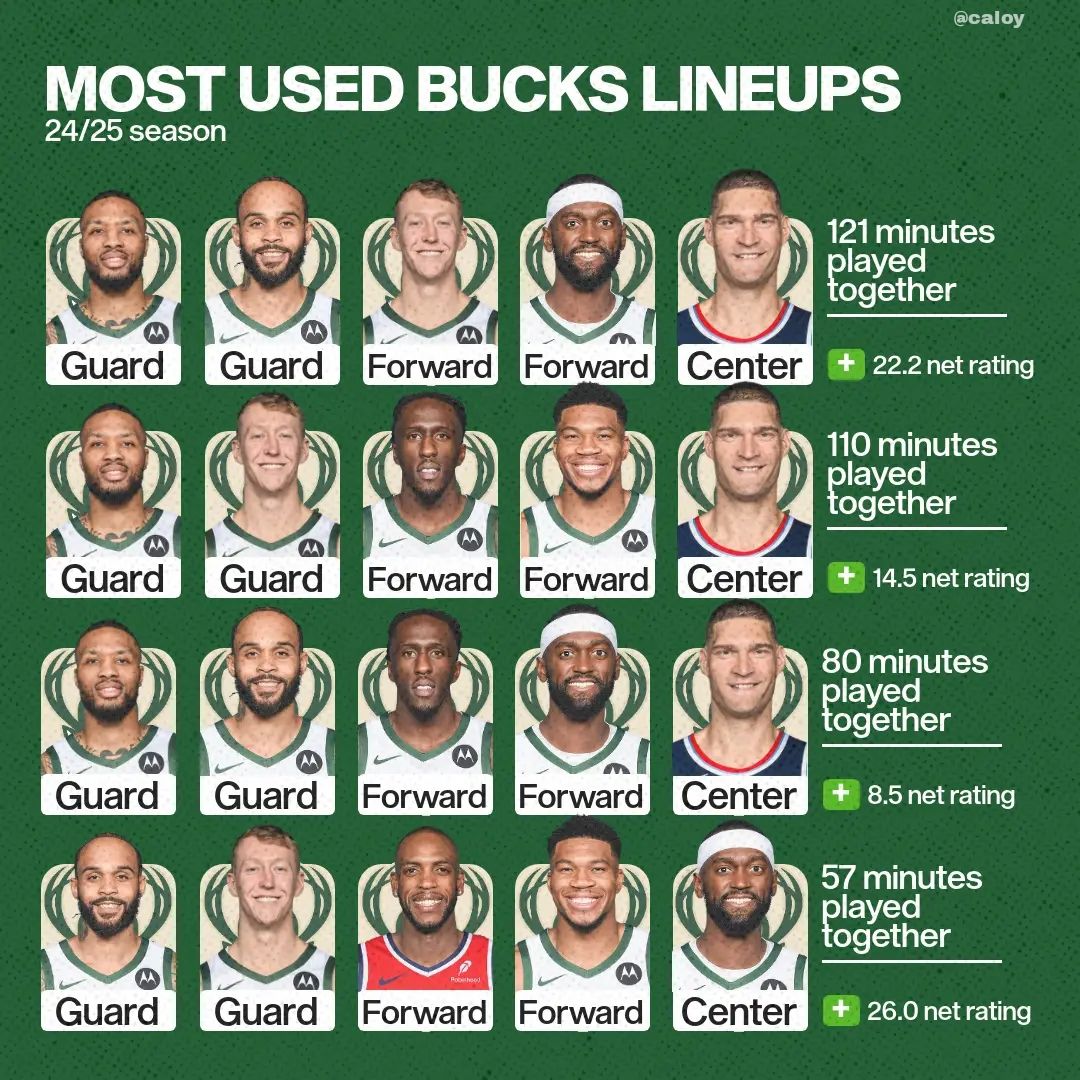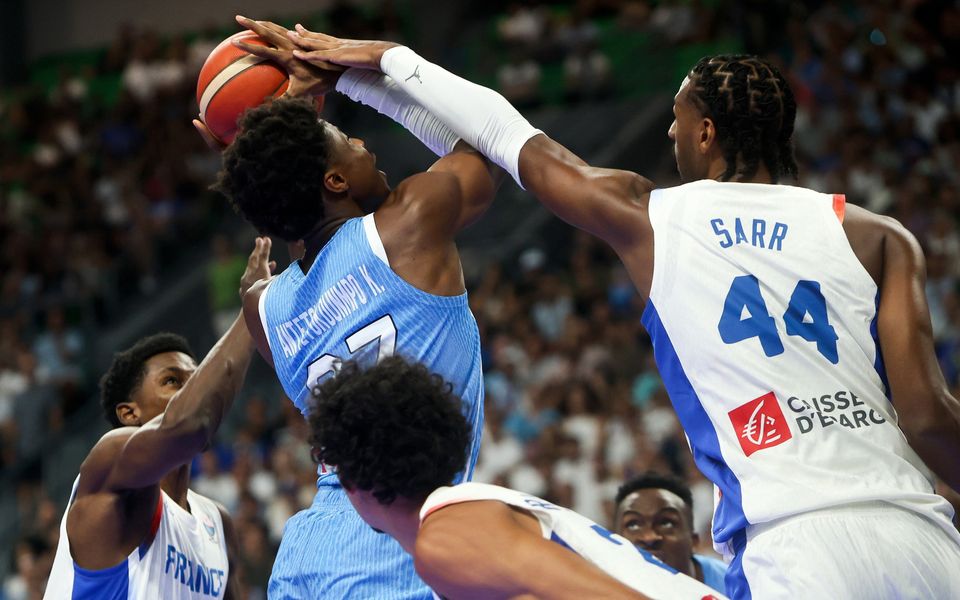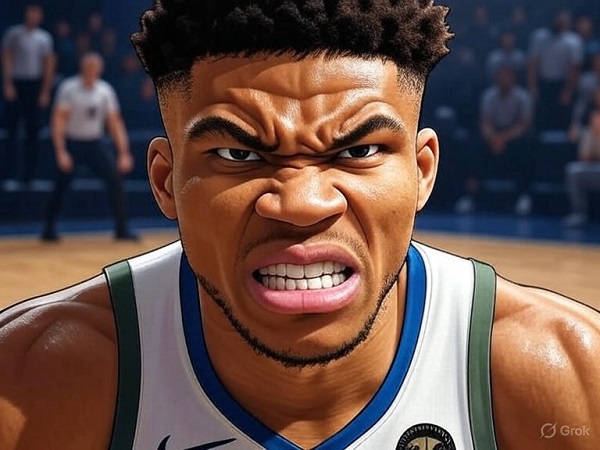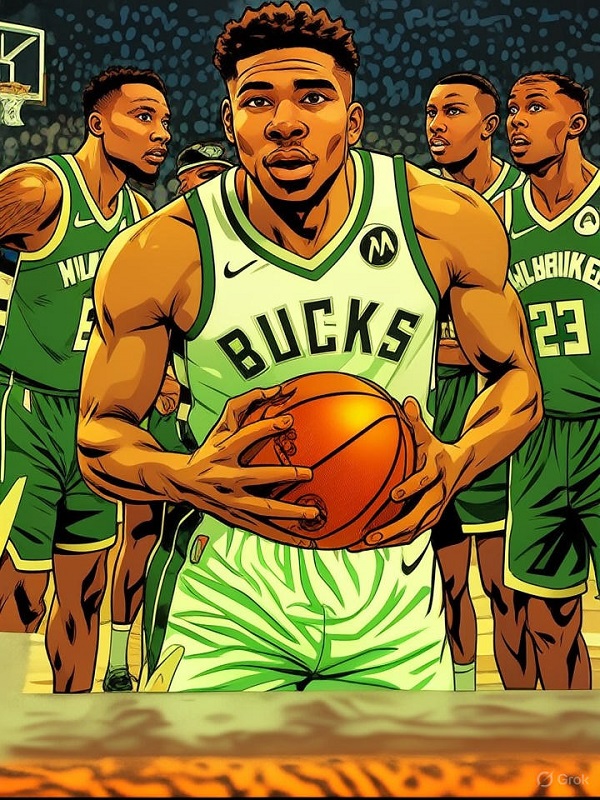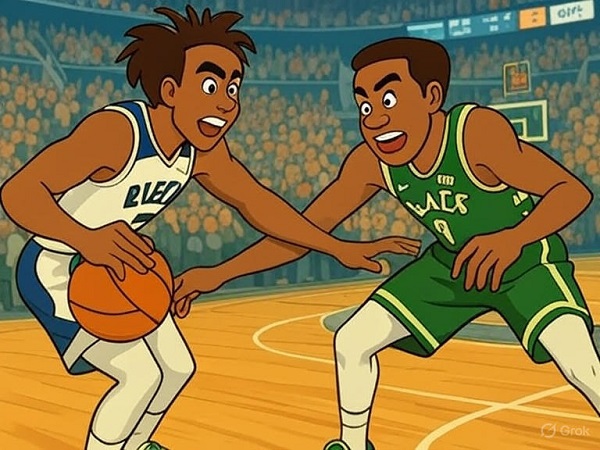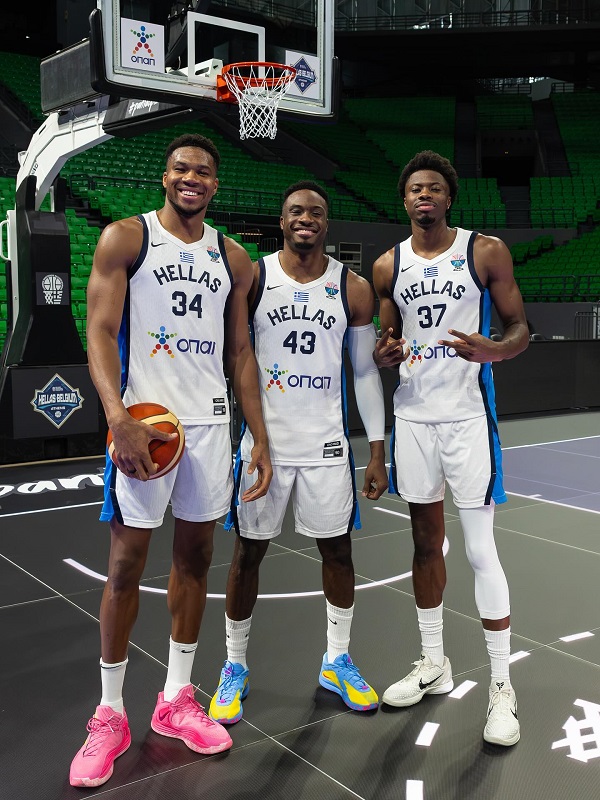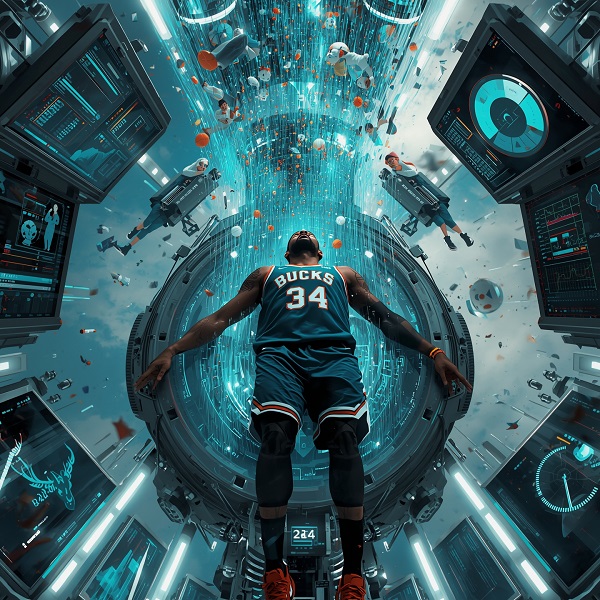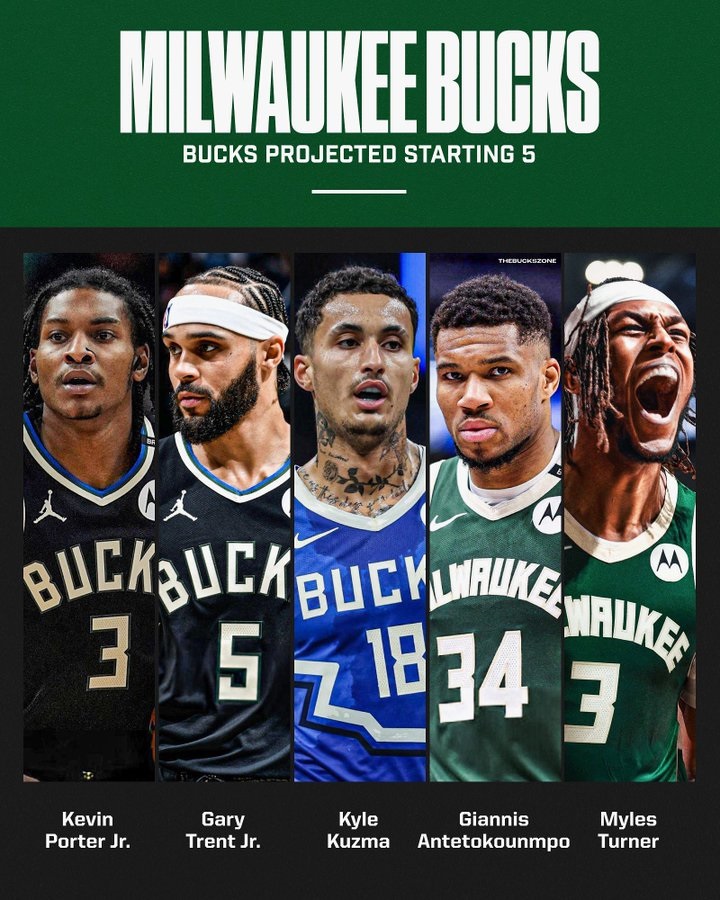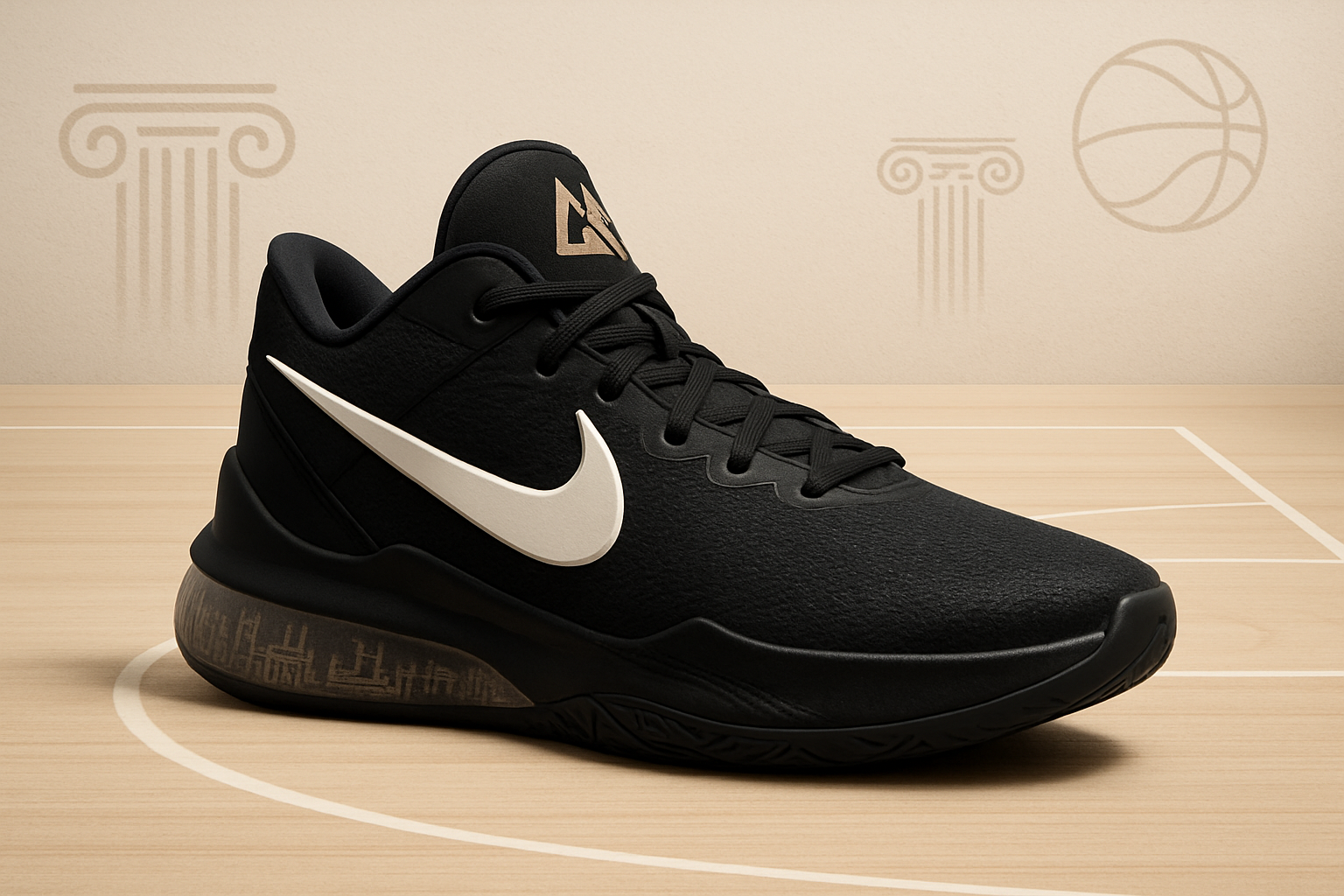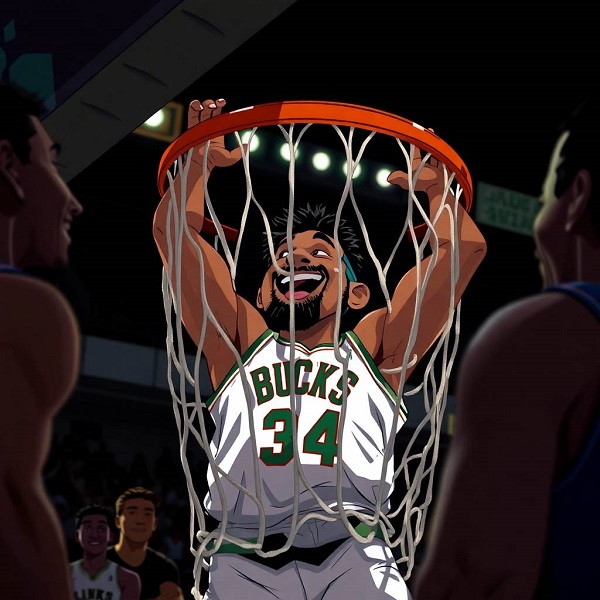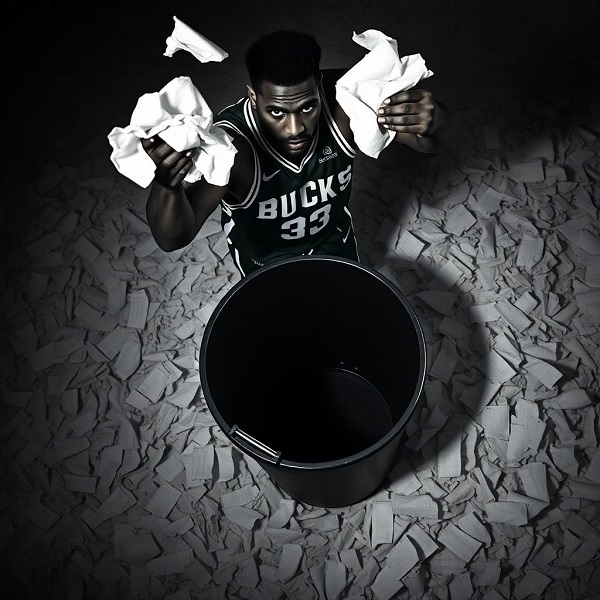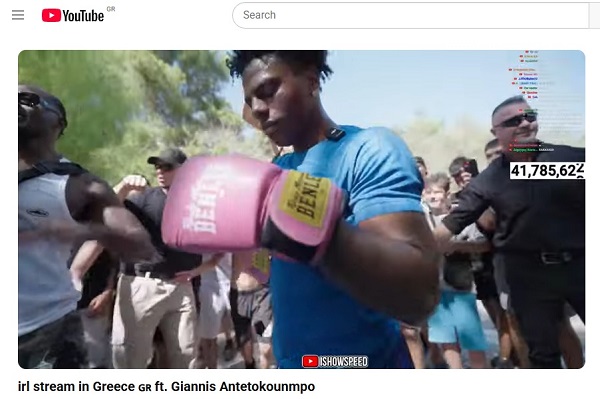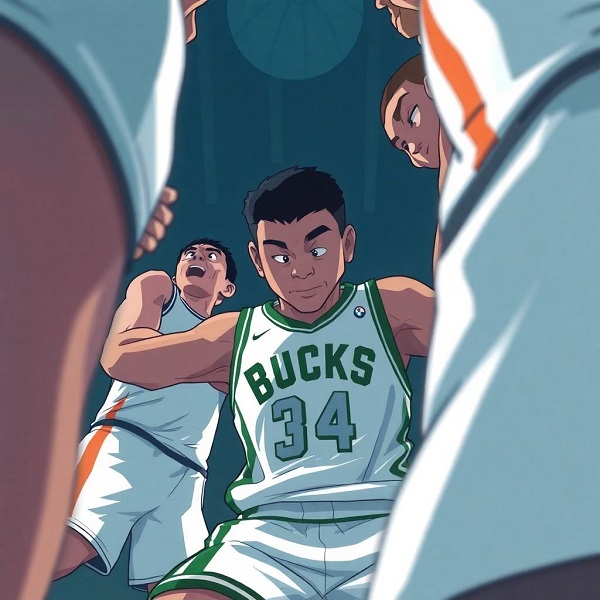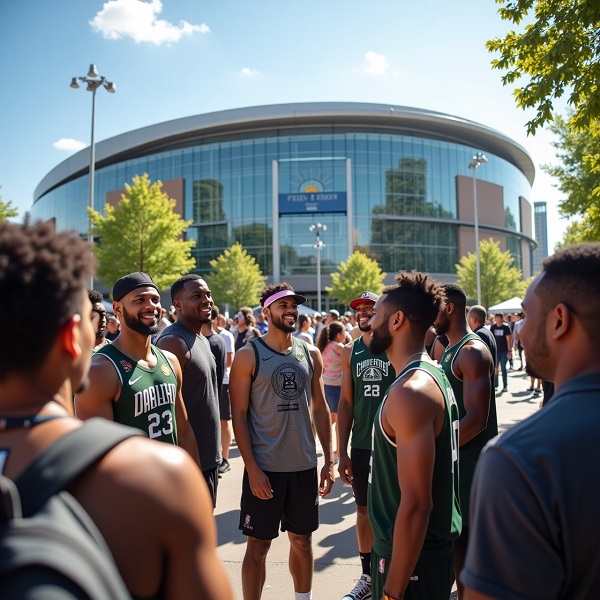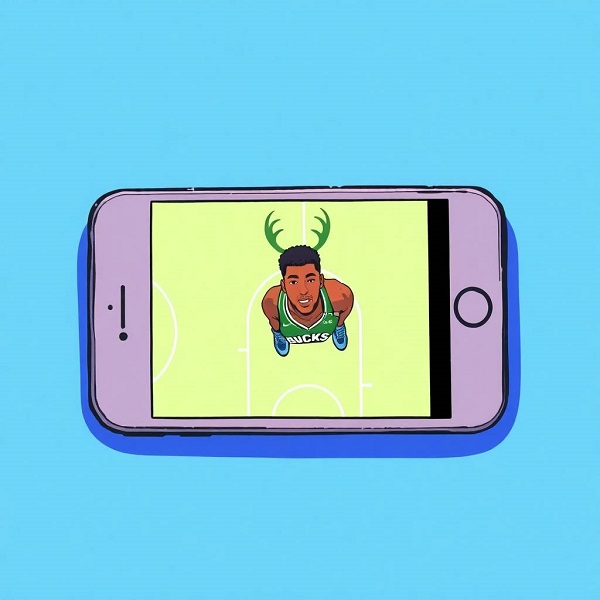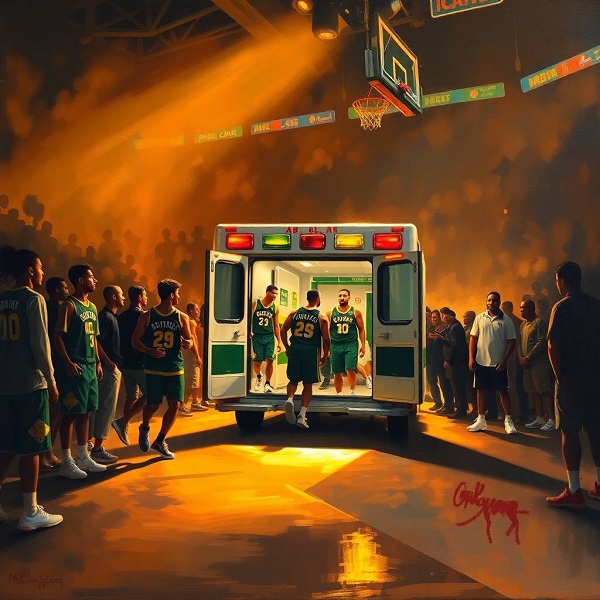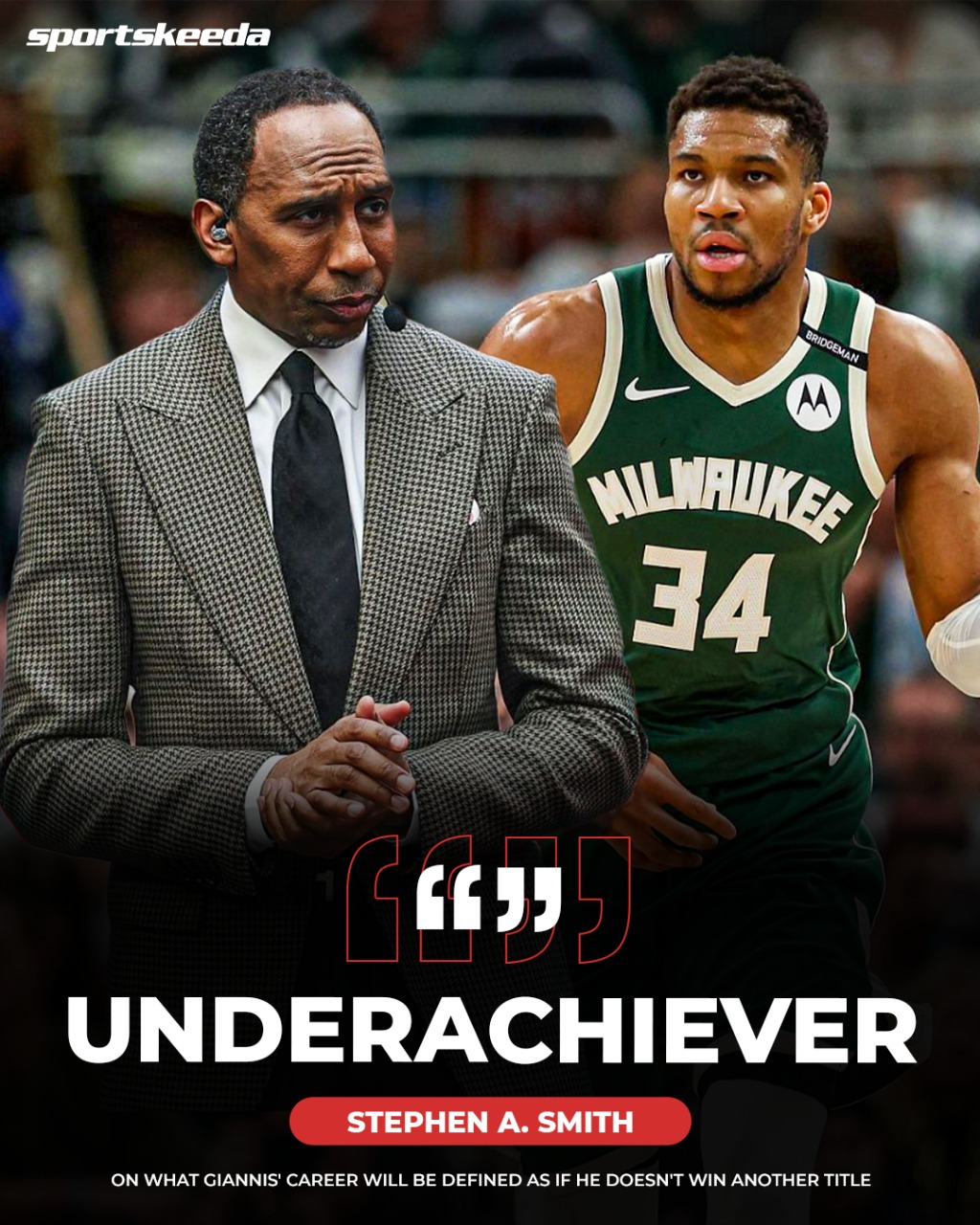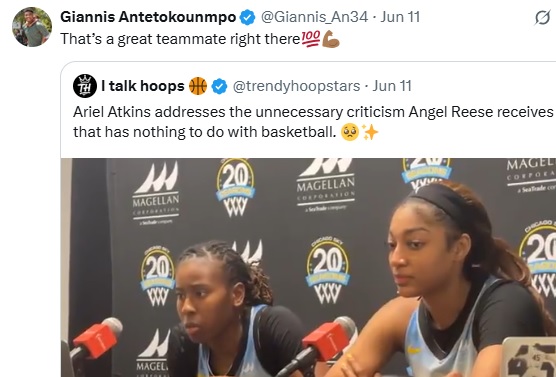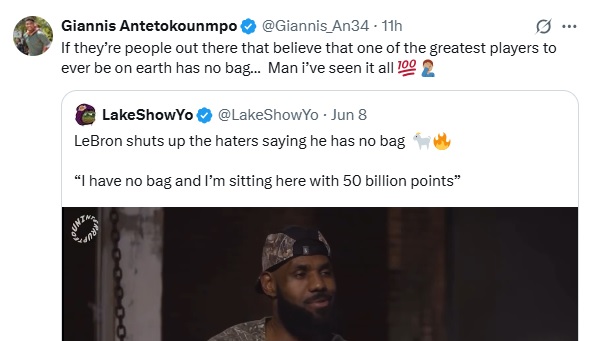On June 13, 2025, ESPN’s Stephen A. Smith sparked a firestorm of debate on First Take by labelling Milwaukee Bucks superstar Giannis Antetokounmpo an “underachiever” if he fails to win another NBA championship. The comment, delivered in response to host Molly Qerim’s question about how to describe Giannis’ legacy without additional titles, drew immediate backlash from fans and analysts alike. Many pointed to Giannis’ remarkable journey—from a street vendor in Athens, Greece, to a two-time MVP, Finals MVP, and NBA champion—as evidence that the label is absurd. Yet, while Antetokounmpo’s story is undeniably inspiring, Smith’s argument has merit when viewed through the lens of Giannis’ dominance, postseason shortcomings, and the expectations placed on players of his calibre. Let me be the first to say that Stephen A Smith is a clown and very often his takes are ridiculous. But in this case he is 100% correct.
Giannis’ Unparalleled Dominance Sets a High Bar
Giannis Antetokounmpo over the last four years, across a minimum of 200 games, Giannis ranks second in the NBA with 30.4 points per game and fifth with 11.7 rebounds per game. His accolades are staggering: nine All-NBA selections, nine All-Star appearances, two MVP awards, a Defensive Player of the Year award, and a Finals MVP in 2021. At 30 years old, in the prime of his career, Giannis is still a physical marvel but in terms of actual impact on games that matter?
This dominance is precisely why Smith’s “underachiever” label resonates. Players of Giannis’ stature—think Michael Jordan, LeBron James, or Kevin Durant—are judged not just by individual brilliance but by their ability to translate it into sustained postseason success. Smith argues, “You don’t look at somebody that dominant, that fantastic, with that kind of fire in his belly to compete on a night-in, night-out basis, and all you have is one championship to show for it.” The expectation for a player of Giannis’ caliber isn’t just to win once but to contend consistently and build a legacy of multiple titles. His 2021 championship was a historic triumph, but the Bucks’ inability to replicate that success raises questions about whether Giannis is fully capitalizing on his prime. Most importantly he doesn’t seem to be able to elevate those around him. Quite the opposite.
Postseason Struggles: A Pattern of Disappointment
Since their 2021 title, the Milwaukee Bucks have struggled in the playoffs, posting just one series win in the last four years. The team has suffered first-round exits in each of the past three seasons (2023–2025), a stark contrast to Giannis’ regular-season dominance. While injuries have played a role—Giannis missed significant time in the 2023 and 2024 playoffs due to back and calf injuries, respectively—the Bucks’ postseason woes extend beyond health concerns.
In 2022, the Bucks fell to the Boston Celtics in the second round, with Giannis playing all seven games. In 2023, despite Giannis’ absence for parts of the series, the Bucks were favored against the Miami Heat but collapsed in five games. In 2024, without Giannis, they lost to the Indiana Pacers in the first round. Even in 2025, with Giannis healthy, the Bucks fell to the Pacers again in five games. Smith highlighted this trend, noting that Giannis “has more All-NBA selections than postseason wins in the last four years.” For a player of his calibre, this discrepancy is striking.
Critics argue that these failures aren’t entirely Giannis’ fault. The Bucks have faced roster challenges, including an aging core and questionable front-office decisions. The 2023 trade for Damian Lillard, which cost them Jrue Holiday, a defensive anchor and clutch performer, has yet to yield the expected results, partly due to Lillard’s declining athleticism. The midseason trade of Khris Middleton to the Washington Wizards in 2024–25 further disrupted team chemistry. Yet, as the face of the franchise, Giannis bears the burden of elevating his team in critical moments. In the championship run, the more you look at it, the more it seems that Khris, Jrue and Brook did the job and Giannis just turned up for the Finals where it was easy. His inability to impact important games again and again, even in the regular season, lends credence to Smith’s critique.
The Championship-or-Bust Standard for Superstars
In the NBA, superstars are judged by championships, a standard that may seem unfair but is deeply ingrained in the sport’s culture. Legends like Kevin Garnett and Dirk Nowitzki, each with one ring, are often cited by Giannis’ defenders as proof that a single title can cement a legacy. However, both Garnett and Nowitzki faced criticism during their careers for not winning more, and their lone championships came against formidable opponents, much like Giannis’ 2021 title. The difference lies in expectations: Giannis, with his two MVPs and prime years ahead, is held to a higher standard than most.
Smith’s argument hinges on this championship-or-bust mentality. He acknowledges Giannis’ greatness but insists that “it’s unacceptable” for a player of his dominance to have just one title and limited playoff success. This perspective aligns with how other superstars are evaluated. LeBron James faced intense scrutiny until he won his first title in 2012; Kevin Durant was labelled a “ring-chaser” until he won in 2017. Even Nikola Jokić, a one-time champion, faces pressure to add more rings to his résumé. Giannis, with his unique blend of accolades and physical gifts, is no exception. It’s not just about the rings. It is about proving you can do it when it matters, not just regular season stat padding at which Giannis excels.
Organizational Limbo and Giannis’ Role
Superstars are expected to transcend organizational shortcomings. Michael Jordan carried flawed Bulls rosters to playoff success before Scottie Pippen’s arrival; LeBron James dragged undermanned Cavaliers teams to the Finals. Giannis’ recent playoff performances, while statistically impressive as individual numbers, haven’t yielded the same results. For example, in the 2025 playoffs against the Pacers, Giannis averaged 31.8 points and 12.4 rebounds but couldn’t prevent a five-game loss. Smith’s point is that a player of Giannis’ calibre should find ways to win, even when the odds are stacked against him. And he seems more incapable of doing that than ever. If anything, he is getting worse!
The Trade Rumors and Legacy Pressure
Giannis’ future with the Bucks has been a hot topic, with trade rumours swirling as Milwaukee struggles to build a contender around him. Reports from ESPN’s Brian Windhorst on June 10, 2025, indicate that there’s currently no trade market for Giannis, and he hasn’t requested a move. However, the speculation itself underscores the pressure on Giannis to deliver. If he were to leave Milwaukee without another title, his legacy could take a hit, as loyalty to a small-market team is often weighed against championship success.
Smith’s “underachiever” label is partly a warning: without another ring, Giannis risks being remembered as a player who didn’t fully realise his potential. This sentiment is echoed by some fans on social media, with one user (@bets_liam) noting the Bucks’ “organisational limbo” and lack of depth as barriers to Giannis’ success. Yet, the expectation remains that Giannis, as a top-tier superstar, should overcome these obstacles or seek a situation where he can win.
Excuses excuses
Giannis’ defenders have the same points they make every year. His journey from a No. 15 draft pick in the Greek second division to NBA stardom is one of the most inspiring in sports history. Injuries, both to Giannis and his teammates, have derailed potential deep playoff runs but these can also be attributed to their own mistakes in the way they approach their season. The Bucks’ roster moves, particularly the Lillard trade, haven’t panned out as hoped. Moreover, comparing Giannis to players like Jordan or James may be unfair, as few players in history have matched their postseason dominance. Legends like Jerry West, Oscar Robertson, and Julius Erving, each with one ring, are rarely called underachievers.
These excuses don’t negate Smith’s core point: Giannis’ talent demands more than one title. His regular-season excellence and 2021 heroics have set a sky-high standard, and the Bucks’ recent playoff failures fall short of that mark. Smith’s take, while harsh, reflects the unforgiving expectations placed on superstars in the NBA. “XYZ famous player didn’t win any titles?” come the Giannis fanboys in his defence. That is irrelevant. They had impact on the game when it mattered. They elevated their team mates or they did heroics on their own enough to get their teams along in the playoffs. They didn’t exit 4-1 in the playoffs like Giannis does all the time. It really looks like all he cares about is his individual stats. All season the story has been “Giannis gets 30+ points but…”
A Call to Action for Giannis
Stephen A. Smith’s “underachiever” label for Giannis Antetokounmpo is a provocative but defensible stance. Giannis’ dominance in the regular season, coupled with the Bucks’ postseason struggles, creates a gap between his potential and his achievements. While injuries, roster issues, and organisational missteps share the blame, superstars are judged by their ability to overcome adversity and deliver championships. Giannis’ 2021 title proved he’s capable of greatness, but without additional rings, his legacy risks being defined by what could have been. This season he couldn’t even beat any of the top teams in the East in the regular season! Not even once!
Rather than a condemnation, Smith’s comment is a call to action. For now, Smith’s take serves as a reminder of the relentless standard applied to the NBA’s elite: greatness isn’t just about what you’ve done, but what you continue to achieve. And after more than a decade in the NBA, Giannis’ excuses are getting very very stale. Especially when we are not seeing improvements in his game. On the contrary he is getting worse at most things on the floor. At 30, Giannis has time to add to his résumé, whether in Milwaukee or elsewhere. His response to this criticism—on the court, in the playoffs—will ultimately shape how history views him. But so many times he has made big statements and then gone off to simply fail again in the playoffs.
Sources:
- Baller Alert, June 14, 2025
- Footboom1.com, June 13, 2025
- ProFootballNetwork.com, June 13, 2025
- NBA Analysis, June 14, 2025
- JSONLine.com, June 14, 2025
- Posts on X, June 13, 2025



